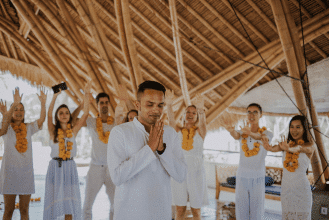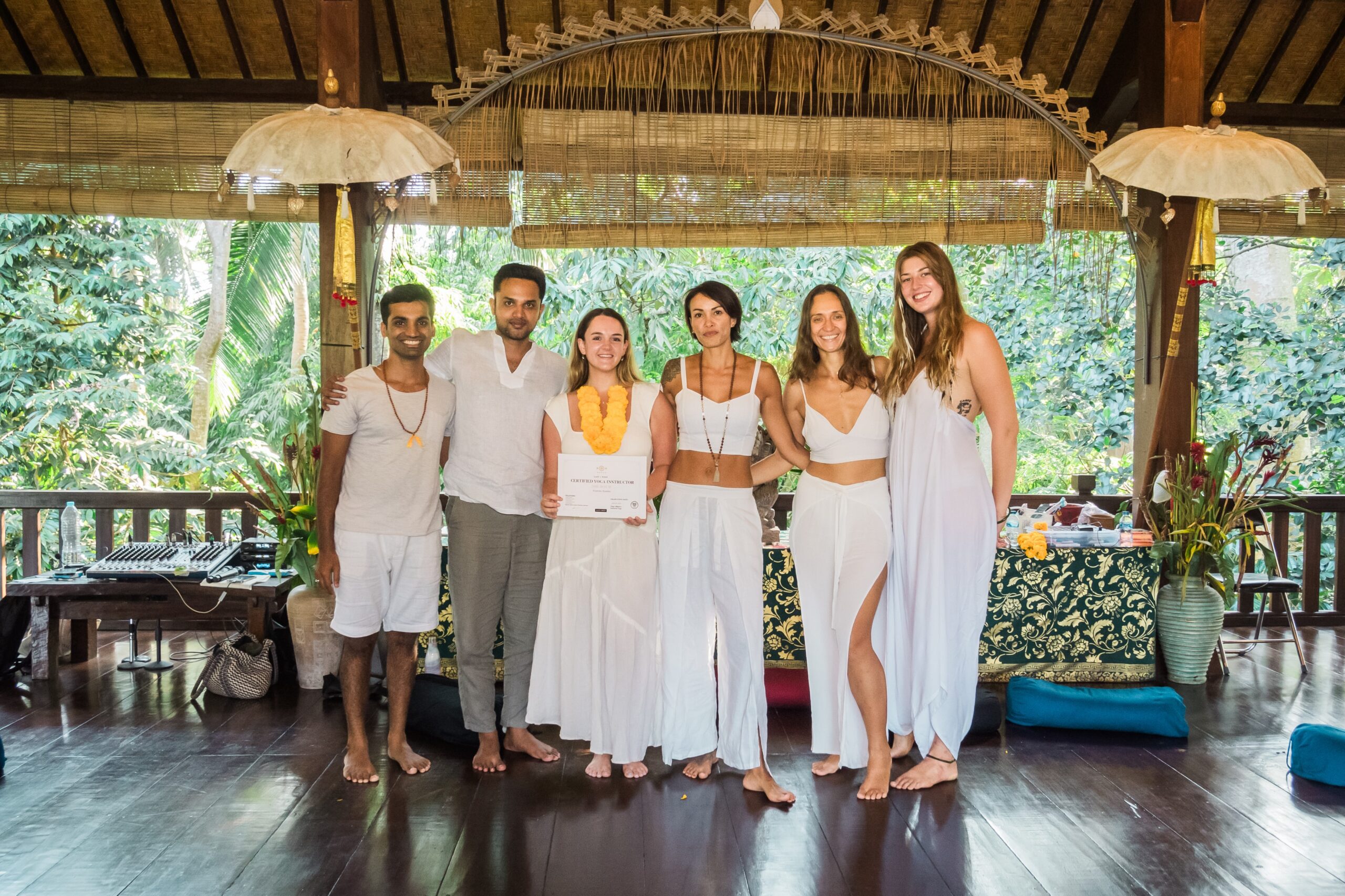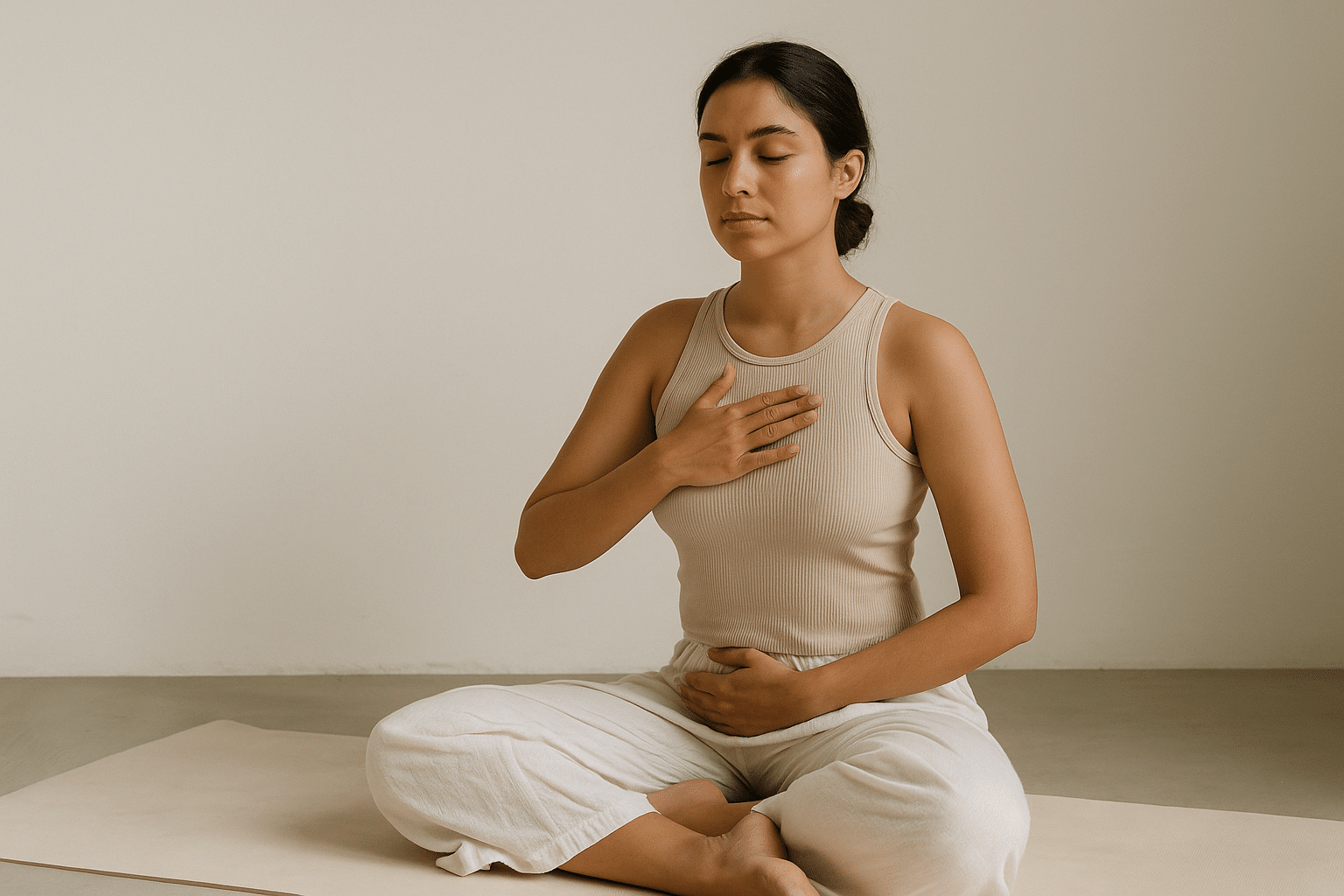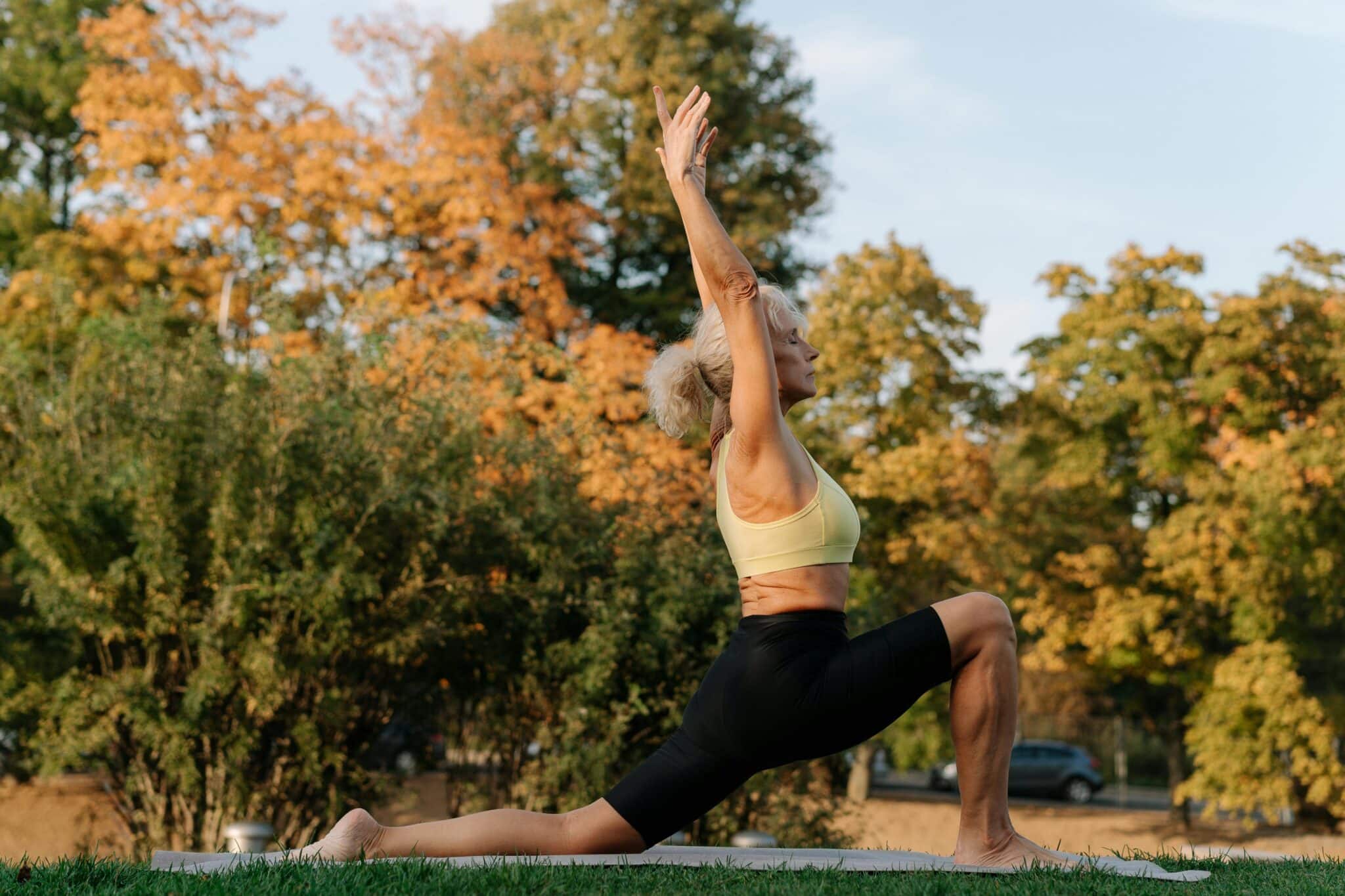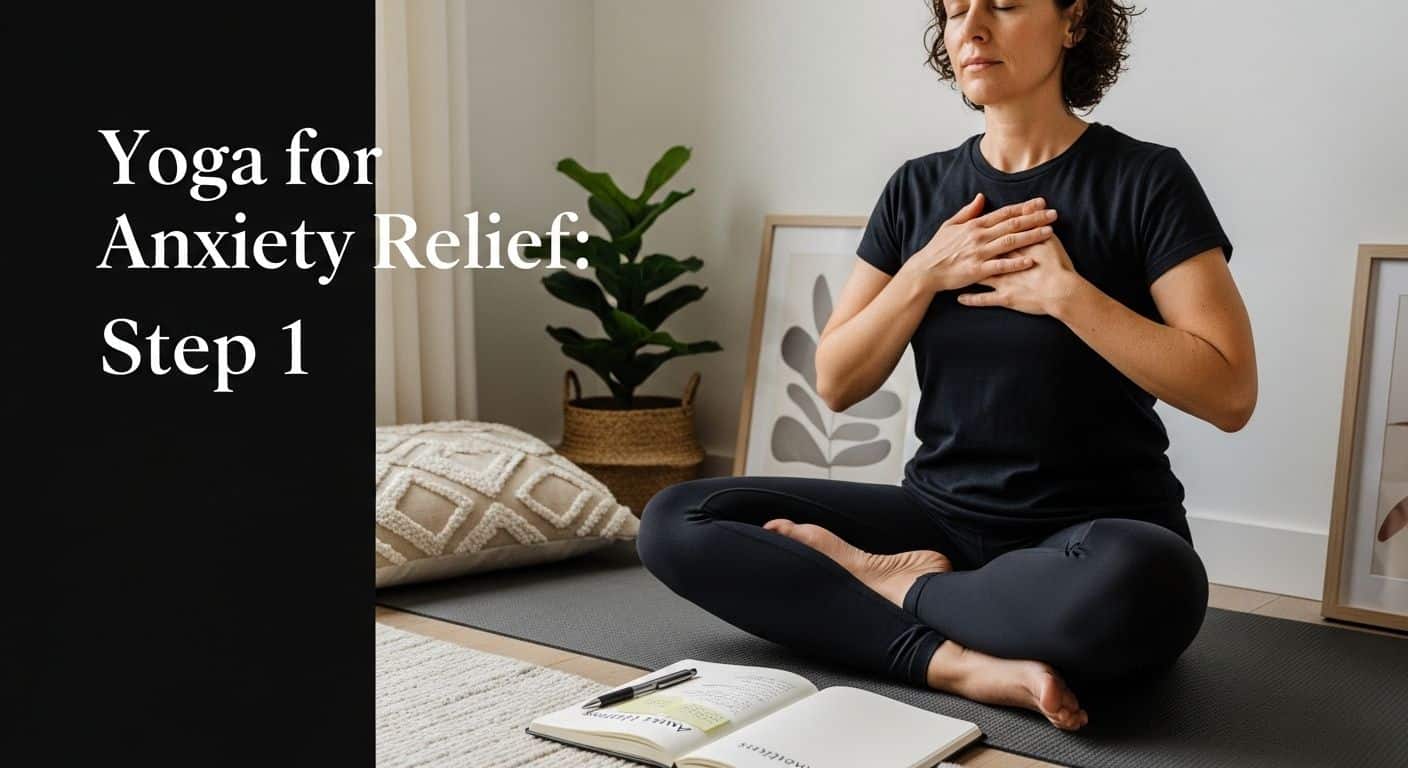
Thinking about becoming a yoga instructor? You might be surprised that over 36,000 people earn certification from Yoga Alliance every year, making this one of the fastest-growing wellness careers around. Most people think mastering handstands or fancy poses is the main hurdle. The real path to success actually starts with emotional intelligence, not flexibility. Here’s how future instructors are reshaping what it means to teach yoga in 2025.
Table of Contents
- Understanding Yoga Instructor Certification Paths
- Essential Skills And Qualities For Teachers
- Choosing The Right Yoga Teacher Training Program
- Building Your Yoga Teaching Career
Quick Summary
| Takeaway | Explanation |
|---|---|
| Recognized Certification Standards | Become a certified yoga instructor by obtaining credentials from recognized organizations like Yoga Alliance, which offers RYT certifications at varying levels to reflect your training depth and expertise. |
| Essential Skills for Instructors | Develop technical skills in anatomy and posture instruction, emotional intelligence for supportive teaching, and a commitment to continuous personal practice to evolve as an instructor. |
| Choosing the Right Training Program | Carefully evaluate yoga teacher training programs for comprehensive curricula and instructor qualifications that align with your personal philosophy and professional aspirations. |
| Building a Unique Teaching Identity | Establish your professional identity by identifying a unique teaching style, focusing on a specific niche within yoga, and creating diverse teaching opportunities to attract students. |
| Commitment to Continuous Development | Engage in ongoing professional development through advanced training, workshops, and personal practice to enhance your teaching skills and adapt to new trends in the yoga industry. |
Understanding Yoga Instructor Certification Paths
Becoming a yoga instructor requires navigating a complex landscape of certification paths that blend professional credentials, personal development, and comprehensive training. The journey to becoming a certified yoga teacher is more than just learning poses—it’s about understanding the deep philosophical foundations, anatomical principles, and teaching methodologies that transform a practitioner into an exceptional instructor.

Recognized Certification Standards
The yoga certification landscape is primarily governed by professional organizations that establish rigorous training standards. The Yoga Alliance, a prominent U.S. nonprofit organization, provides a voluntary credentialing system that has become an industry benchmark. Their registration levels include Registered Yoga Teacher (RYT) certifications at 200-, 300-, and 500-hour levels, each representing increasing depths of knowledge and expertise.
These certification levels are not just arbitrary numbers. A 200-hour certification represents the foundational training where aspiring instructors learn fundamental asanas, teaching methodologies, anatomy, and basic yoga philosophy. The 300-hour and 500-hour advanced certifications delve deeper into specialized techniques, advanced sequencing, therapeutic applications, and professional teaching skills.
To help readers easily compare the major yoga certification standards described, here is a table summarizing the key features of the main U.S. and international certification options.
| Organization | Region | Certification Levels/Credentials | Training Hours/Duration | Notable Requirements |
|---|---|---|---|---|
| Yoga Alliance | U.S./International | RYT 200, RYT 300, RYT 500 | 200, 300, 500 hours | Foundational and advanced training; ongoing continuing education |
| European Union of Yoga (EUY) | Europe | EUY Yoga Teacher Certificate | Min. 500 hours over 4 years | Oral/written exams, practical demonstration |
| British Wheel of Yoga | UK | Certificate in Yoga Teaching, Diploma | Regulated by Ofqual (varied hours) | Recognized by Sport England; standardized assessment |
International Certification Frameworks
Beyond the United States, international organizations also play crucial roles in establishing yoga teaching standards. The European Union of Yoga (EUY) sets comprehensive guidelines requiring a minimum of 500 hours of class instruction spread over four years. Their assessment process is particularly rigorous, involving oral and written examinations alongside practical teaching demonstrations.
In the United Kingdom, the British Wheel of Yoga, recognized by Sport England as the national governing body for yoga, offers regulated qualifications including the Certificate in Yoga Teaching and the Diploma in Teaching Yoga. These credentials are officially recognized by Ofqual, ensuring a standardized and high-quality educational approach.
Choosing the Right Certification Path
Selecting the appropriate certification path requires careful consideration of personal goals, preferred yoga styles, and professional aspirations. Some practitioners might prioritize learning about job opportunities in yoga instruction, while others focus on deepening their personal practice and philosophical understanding.
Aspiring yoga instructors should research multiple certification programs, considering factors like curriculum depth, instructor expertise, teaching methodology, and alignment with their personal yoga philosophy. Accreditation from recognized bodies like Yoga Alliance provides a stamp of credibility and increases professional opportunities.
While certifications are essential, they represent just the beginning of a yoga instructor’s journey. Continuous learning, personal practice, and a commitment to embodying yogic principles are equally important in developing as a world-class instructor. The path to becoming a yoga teacher is as much about inner transformation as it is about external credentials.
Essential Skills and Qualities for Teachers
Becoming an exceptional yoga instructor goes far beyond mastering physical postures. The most transformative teachers possess a complex blend of technical expertise, emotional intelligence, and profound personal commitment to the yogic path. Success in this field requires developing a holistic skill set that encompasses physical, mental, and interpersonal dimensions.
Physical and Technical Competence
A successful yoga instructor must demonstrate advanced anatomical knowledge and precise technical skills. According to research from the Pacific College of Health and Science, effective communication of physical alignment, understanding body mechanics, and the ability to demonstrate and modify poses are fundamental. This involves not just knowing how to perform an asana, but comprehending the intricate muscular, skeletal, and energetic interactions happening within each movement.
Professional instructors must develop keen observational skills to assess student capabilities, recognize potential injury risks, and provide personalized modifications. Understanding human anatomy enables teachers to create safe, inclusive class environments where practitioners of all levels can explore their physical potential.
Emotional Intelligence and Teaching Presence

Beyond technical prowess, yoga instructors must cultivate exceptional emotional intelligence. Research from Om Shanti Om Yoga highlights the importance of creating a supportive, non-judgmental atmosphere that encourages student growth. This requires extraordinary empathy, active listening skills, and the ability to read subtle emotional and physical cues.
A compelling teaching presence involves more than delivering instructions. It encompasses the capacity to inspire, motivate, and create transformative experiences. Successful instructors blend technical precision with genuine compassion, helping students navigate not just physical challenges but also emotional and spiritual barriers. They serve as guides who understand that yoga is a holistic practice transcending mere physical exercise.
Continuous Learning and Personal Practice
The most remarkable yoga teachers view their profession as a lifelong journey of learning and self-discovery. Karma Yoga’s professional development research emphasizes that top instructors maintain a rigorous personal practice, continuously expanding their knowledge through advanced training, workshops, and cross-disciplinary studies.
This commitment to growth extends beyond yoga-specific skills. Successful instructors often develop complementary expertise in areas like nutrition, psychology, meditation, and movement sciences. They remain curious, adaptable, and open to evolving teaching methodologies. For those interested in exploring professional opportunities in this dynamic field, staying current with industry trends and maintaining a diverse skill set is crucial.
Ultimately, becoming an extraordinary yoga instructor is a profound personal transformation. It requires dedication, authenticity, and a genuine passion for supporting others’ physical, mental, and spiritual well-being. The most impactful teachers don’t just instruct—they inspire, heal, and create spaces for profound personal growth.
Choosing the Right Yoga Teacher Training Program
Selecting the ideal yoga teacher training program is a critical decision that will shape your professional trajectory and personal practice. The right program does more than provide certification—it becomes a transformative journey of self-discovery, professional development, and deep yogic understanding.
Below is a checklist-style table summarizing the key elements to evaluate when selecting a yoga teacher training program, as discussed in this section.
| Program Element | Is it Covered in the Training? |
|---|---|
| In-depth asana and posture study | Yes/No |
| Pranayama and breathwork techniques | Yes/No |
| Meditation practices | Yes/No |
| Anatomy and physiology | Yes/No |
| Yoga philosophy and tradition | Yes/No |
| Teaching methodology | Yes/No |
| Lead instructor’s credentials/experience | Yes/No |
| Accreditation (e.g., Yoga Alliance) | Yes/No |
| Personal philosophy alignment | Yes/No |
| Learning environment & format suitability | Yes/No |
Comprehensive Curriculum Evaluation
According to research from Aarambh Yoga, aspiring yoga instructors must carefully evaluate a program’s curriculum for comprehensive coverage. A high-quality training should extend far beyond basic posture instruction, integrating multiple critical components of yoga education.
Key curriculum elements to assess include in-depth study of asana practice, pranayama techniques, meditation practices, anatomy, yoga philosophy, and advanced teaching methodologies. Look for programs that offer a balanced approach, combining theoretical knowledge with practical teaching skills. The curriculum should challenge you intellectually while providing opportunities for personal growth and experiential learning.
Instructor Qualifications and Program Credentials
Research from Gaiaflow Yoga emphasizes the critical importance of investigating the backgrounds and qualifications of lead instructors. Experienced teachers with extensive backgrounds in both practice and teaching bring nuanced insights that transform standard training into exceptional educational experiences.
Accreditation is another crucial factor. Explore comprehensive details about yoga teacher training foundations to understand the significance of credentials from recognized organizations like Yoga Alliance. These credentials ensure that the program meets established professional standards and provides a globally recognized certification.
Personal Alignment and Learning Environment
Beyond technical considerations, choosing a yoga teacher training program requires deep personal reflection. The right program should resonate with your individual yoga philosophy, learning style, and professional aspirations. Consider factors like program format (intensive versus extended), geographical location, teaching style, and the specific yoga tradition being taught.
Some practitioners prefer immersive experiences in exotic locations, while others might prioritize local programs that allow continued personal and professional commitments. A comprehensive guide to completing your initial 200-hour certification can provide valuable insights into making this critical decision.
Ultimately, the most successful yoga teacher training experience transcends mere technical instruction. It should challenge your preconceptions, deepen your practice, and prepare you not just as an instructor, but as a holistic guide who understands yoga’s profound transformative potential. Take time to research, reflect, and choose a program that aligns with your deepest personal and professional aspirations.
Building Your Yoga Teaching Career
Transitioning from a yoga practitioner to a professional instructor requires strategic planning, continuous learning, and entrepreneurial spirit. Building a successful yoga teaching career demands more than technical expertise—it requires passion, adaptability, and a comprehensive approach to professional development.
Developing Your Professional Identity
According to research from University HQ, establishing a successful yoga teaching career begins with completing a recognized certification program, such as the 200-hour Registered Yoga Teacher (RYT) training accredited by Yoga Alliance. This foundational certification provides comprehensive instruction in yoga techniques, teaching methodology, anatomy, physiology, and professional ethics.
Beyond basic certification, developing a unique professional identity is crucial. Discover strategies to stand out in the competitive yoga job market by identifying your distinctive teaching style, specialized skills, and personal yoga philosophy. This differentiation helps attract students and creates opportunities for meaningful professional growth.
Creating Diverse Teaching Opportunities
Research from Yoga U Online emphasizes the importance of developing a specialized niche within the yoga industry. By focusing on specific areas like prenatal yoga, therapeutic yoga, corporate wellness, or specialized fitness integration, instructors can distinguish themselves in a competitive market and attract targeted student demographics.
Multiple teaching platforms offer opportunities for career expansion. These might include yoga studios, fitness centers, corporate wellness programs, online platforms, private instruction, retreats, and workshops. Explore comprehensive guidance on finding dream yoga instructor jobs to understand the breadth of potential career paths.
Continuous Professional Development
According to professional yoga training resources, maintaining a consistent personal yoga practice is fundamental to professional growth. This ongoing commitment enhances teaching skills, deepens understanding, and ensures high-quality instruction for students.
Continuous learning extends beyond personal practice. Successful yoga instructors invest in advanced certifications, attend workshops, participate in training programs, and remain current with emerging yoga methodologies and wellness trends. Networking with fellow instructors, joining professional associations, and engaging in community events can provide valuable opportunities for professional connection and growth.
Building a yoga teaching career is a holistic journey of personal and professional transformation. It requires dedication, creativity, and a genuine commitment to supporting students’ physical, mental, and spiritual well-being. By approaching your career with intentionality, adaptability, and passion, you can create a fulfilling and impactful professional path in the dynamic world of yoga instruction.
Frequently Asked Questions
What certification do I need to become a yoga instructor?
To become a certified yoga instructor, you can obtain credentials from recognized organizations like Yoga Alliance, which offers various levels of Registered Yoga Teacher (RYT) certifications, including 200-, 300-, and 500-hour programs that reflect your training depth and expertise.
How do I choose the right yoga teacher training program?
When selecting a yoga teacher training program, evaluate its curriculum for comprehensive coverage, check the lead instructor’s qualifications, and ensure that the program aligns with your personal yoga philosophy and learning style.
What skills are essential for becoming a successful yoga instructor?
Successful yoga instructors must possess physical and technical competence in anatomy and posture instruction, emotional intelligence to create a supportive teaching presence, and a commitment to continuous learning and personal practice to evolve in their roles.
How can I build my yoga teaching career after certification?
To build your yoga teaching career, develop a unique professional identity by identifying your teaching niche, create diverse teaching opportunities through various platforms, and engage in continuous professional development by attending workshops and advanced training.
Turn Your Yoga Passion Into a Certification That Changes Lives
So many aspiring instructors feel overwhelmed by emerging certification standards, the fear of not choosing the right training program, and the challenge of building a teaching identity. The article highlighted these critical pain points: selecting the right foundation, developing emotional intelligence, and finding guidance beyond technical skills. If you want a structured path that includes all the essentials—comprehensive curriculum, personalized mentorship, and international recognition—you deserve an educational partner who truly understands your journey.

Stop letting uncertainty hold you back from teaching with confidence. Join Yoga East West for Yoga Alliance-accredited training in dream locations like Bali and Costa Rica. Whether you are seeking your 200-hour Yoga Teacher Training or a deep dive into advanced education, you will find master instructors and a holistic, supportive community ready to help you achieve your goals. Visit our site to view upcoming program dates, explore instructor profiles, and start your application today. Start transforming your practice into an internationally recognized qualification—spaces fill quickly, so take your next step now.
Recommended
- Expert Tips for Becoming a Personal Yoga Instructor in 2024
- How to Find Those Dream Jobs as a Yoga Instructor
- 9 Tips to Stand Out as a Yoga Teacher in the Modern Job Market
- Yoga Teacher Training 101: What You Need to Know | East+West Yoga
- How to Conduct Effective Training: 2025 Actionable Tips – Peuneo
- Food Handler Certification for Teachers in Canada: 2025 Guide – Probe IT


